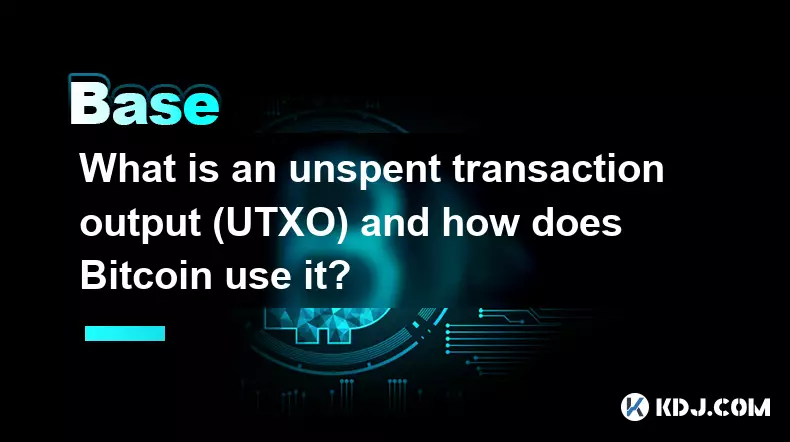-
 bitcoin
bitcoin $103128.103252 USD
-3.33% -
 ethereum
ethereum $3437.127692 USD
-4.86% -
 tether
tether $0.999700 USD
-0.02% -
 xrp
xrp $2.403993 USD
-5.73% -
 bnb
bnb $961.374676 USD
-4.11% -
 solana
solana $154.938665 USD
-8.18% -
 usd-coin
usd-coin $1.000113 USD
0.03% -
 tron
tron $0.298122 USD
0.30% -
 dogecoin
dogecoin $0.172428 USD
-5.76% -
 cardano
cardano $0.557625 USD
-7.13% -
 hyperliquid
hyperliquid $38.740701 USD
-6.51% -
 chainlink
chainlink $15.306051 USD
-7.51% -
 bitcoin-cash
bitcoin-cash $507.558648 USD
-3.26% -
 stellar
stellar $0.281899 USD
-6.74% -
 unus-sed-leo
unus-sed-leo $9.241811 USD
0.57%
What is the difference between a transparent and a shielded transaction?
Transparent transactions on blockchains like Bitcoin ensure openness and trustless verification, while shielded transactions in networks like Zcash use cryptography to protect user privacy.
Nov 10, 2025 at 05:59 pm

Understanding Transparent Transactions in Cryptocurrency
1. Transparent transactions are the standard form of transaction on most public blockchains like Bitcoin and Ethereum. Every detail, including sender address, receiver address, and transaction amount, is visible to anyone accessing the blockchain ledger.
2. These transactions rely on pseudonymity rather than true anonymity. While user identities are not explicitly tied to addresses, patterns of behavior and external data can often be used to de-anonymize participants.
3. The openness of transparent transactions enhances network security and auditability. Anyone can verify the legitimacy of a transaction without needing special permissions or decryption keys.
4. Because all data is publicly accessible, developers and analysts can build tools for tracking fund flows, detecting suspicious activity, and ensuring regulatory compliance.
5. Transparent transactions promote decentralization by allowing full visibility and trustless verification across the network.
The Role of Shielded Transactions in Privacy-Centric Blockchains
1. Shielded transactions obscure critical details such as sender, receiver, and amount using advanced cryptographic techniques like zero-knowledge proofs (e.g., zk-SNARKs).
2. Networks like Zcash offer shielded transactions through dedicated address types (z-addresses), enabling users to conduct private transfers that appear as encrypted data on the blockchain.
3. Unlike transparent transactions, shielded ones do not expose financial behavior to public scrutiny, reducing risks associated with surveillance, profiling, and targeted attacks.
4. While privacy is enhanced, this opacity can complicate auditing and regulatory oversight, leading to debates about compliance and illicit use.
5. Shielded transactions empower individuals to maintain financial confidentiality without sacrificing blockchain integrity.
Technical Differences Between Transaction Types
1. Transparent transactions operate under a model where inputs, outputs, and balances are fully traceable across blocks, making them ideal for transparent ecosystems.
2. Shielded transactions utilize encryption layers that validate correctness without revealing content, ensuring that only parties involved possess full knowledge of the transfer details.
3. The computational overhead for shielded transactions is significantly higher due to complex cryptography, resulting in slower processing times and increased resource demands.
4. Interoperability between shielded and transparent systems introduces challenges; converting funds between private and public formats may leave traces if not handled carefully.
5. The choice between transparency and shielding reflects a fundamental trade-off between openness and privacy in digital asset design.
Frequently Asked Questions
What blockchains support shielded transactions?Zcash is the most prominent blockchain implementing shielded transactions via zk-SNARKs. Other privacy-focused networks like Monero use different methods—such as ring signatures and stealth addresses—to achieve similar goals, though their approach differs technically from Zcash’s shielded pools.
Can transparent transactions be made anonymous?Not inherently. Transparent transactions remain visible to all. Users may attempt to obfuscate trails using mixers or coinjoin protocols, but these methods vary in effectiveness and may not fully conceal links between addresses.
Are shielded transactions illegal?No, shielded transactions are legal in most jurisdictions. However, they attract regulatory attention due to potential misuse. Exchanges and services handling private coins often implement additional KYC measures to comply with anti-money laundering regulations.
How do nodes validate shielded transactions without seeing the data?Nodes rely on cryptographic proofs. In systems like Zcash, a zero-knowledge proof confirms that the transaction is valid—inputs match outputs, no new coins are created, and signatures are correct—without disclosing any underlying information about the parties or amounts involved.
Disclaimer:info@kdj.com
The information provided is not trading advice. kdj.com does not assume any responsibility for any investments made based on the information provided in this article. Cryptocurrencies are highly volatile and it is highly recommended that you invest with caution after thorough research!
If you believe that the content used on this website infringes your copyright, please contact us immediately (info@kdj.com) and we will delete it promptly.
- XRP ETF Approved, Bitcoin Stabilizes, Crypto Updates: What's Next?
- 2025-11-12 19:00:00
- Evercade Alpha Taito Edition: Bartop Behemoth or Redundant Retro?
- 2025-11-12 19:15:02
- Zcash in 2025: Buy, Hodl, or Bye-Bye?
- 2025-11-12 19:00:02
- XRP Tundra's Audited Presale: Riding the Wave of Transparency in Crypto
- 2025-11-12 19:00:02
- MEXC, Chiliz, CHZ Frenzy: A Million-Dollar Fan Fiesta!
- 2025-11-12 19:05:01
- Visa, Stablecoin, and USDC: A New Era of Payments?
- 2025-11-12 19:40:01
Related knowledge

What is the difference between a transparent and a shielded transaction?
Nov 10,2025 at 05:59pm
Understanding Transparent Transactions in Cryptocurrency1. Transparent transactions are the standard form of transaction on most public blockchains li...

What is a "crypto airdrop farmer" and what strategies do they use?
Nov 09,2025 at 03:39pm
What Is a Crypto Airdrop Farmer?1. A crypto airdrop farmer is an individual who actively participates in blockchain projects to qualify for free token...

What is an unspent transaction output (UTXO) and how does Bitcoin use it?
Nov 12,2025 at 01:40am
Understanding the Concept of Unspent Transaction Output (UTXO)1. An Unspent Transaction Output, commonly referred to as UTXO, is a fundamental compone...

How do you track a crypto portfolio across multiple wallets and chains?
Nov 12,2025 at 04:19pm
The Evolution of Decentralized Exchanges in the Crypto Ecosystem1. Decentralized exchanges (DEXs) have transformed how users trade digital assets by r...

How does a crypto insurance protocol work?
Nov 08,2025 at 12:39am
Understanding Crypto Insurance Protocols1. A crypto insurance protocol operates by offering financial protection against losses incurred from digital ...

What is token composability and why is it called "DeFi Legos"?
Nov 09,2025 at 06:39am
Bitcoin's Role in Decentralized Finance1. Bitcoin remains the cornerstone of decentralized finance, serving as a benchmark for value and trustlessness...

What is the difference between a transparent and a shielded transaction?
Nov 10,2025 at 05:59pm
Understanding Transparent Transactions in Cryptocurrency1. Transparent transactions are the standard form of transaction on most public blockchains li...

What is a "crypto airdrop farmer" and what strategies do they use?
Nov 09,2025 at 03:39pm
What Is a Crypto Airdrop Farmer?1. A crypto airdrop farmer is an individual who actively participates in blockchain projects to qualify for free token...

What is an unspent transaction output (UTXO) and how does Bitcoin use it?
Nov 12,2025 at 01:40am
Understanding the Concept of Unspent Transaction Output (UTXO)1. An Unspent Transaction Output, commonly referred to as UTXO, is a fundamental compone...

How do you track a crypto portfolio across multiple wallets and chains?
Nov 12,2025 at 04:19pm
The Evolution of Decentralized Exchanges in the Crypto Ecosystem1. Decentralized exchanges (DEXs) have transformed how users trade digital assets by r...

How does a crypto insurance protocol work?
Nov 08,2025 at 12:39am
Understanding Crypto Insurance Protocols1. A crypto insurance protocol operates by offering financial protection against losses incurred from digital ...

What is token composability and why is it called "DeFi Legos"?
Nov 09,2025 at 06:39am
Bitcoin's Role in Decentralized Finance1. Bitcoin remains the cornerstone of decentralized finance, serving as a benchmark for value and trustlessness...
See all articles


























![[4K 60fps] no care by crashpancake2 (1 Coin) [4K 60fps] no care by crashpancake2 (1 Coin)](/uploads/2025/11/12/cryptocurrencies-news/videos/6913a8862890b_image_500_375.webp)















































